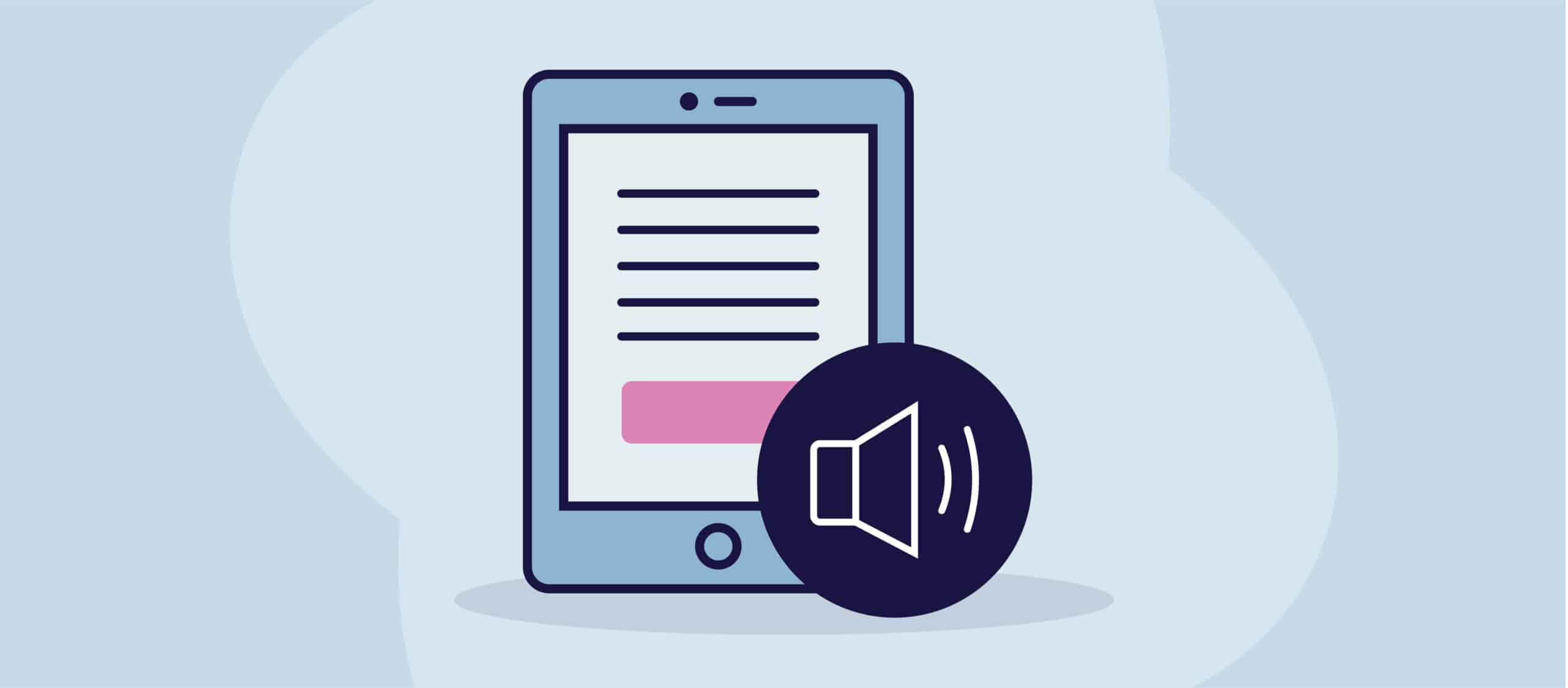Erstellen von zugänglicher Inhalt is no longer just a best practice; it’s a necessity. Ensuring that content is inclusive and easy to comprehend for all readers, including those with disabilities, can broaden your audience, improve user experience, and enhance engagement. Whether you’re writing for a blog, website, or social media, accessibility plays a vital role in ensuring everyone can consume and interact with your content.
The benefits of accessible content are numerous, including compliance with legal standards, better search engine optimization (SEO), and the creation of a more welcoming environment for people with various abilities. The goal of this article is to provide you with the best practices for writing accessible content, ensuring your writing reaches as many people as possible, including those with visual, auditory, cognitive, and motor disabilities.
Understanding Accessible Content
Accessible content refers to information that is designed to be usable by as many people as possible, regardless of their disabilities or limitations. Accessibility is especially important for individuals with disabilities such as visual impairments, hearing loss, cognitive difficulties, or motor skill challenges. Inaccessible content can lead to confusion, frustration, and exclusion for these individuals, limiting their ability to engage with your website or information.
There are established standards, such as the Leitlinien für die Zugänglichkeit von Webinhalten (WCAG) und die Amerikanisches Gesetz für Menschen mit Behinderungen (ADA), that offer clear guidelines for ensuring content is accessible. WCAG, for instance, outlines specific measures to make web content more usable, like ensuring text can be resized, providing alternative text for images, and offering transcripts for multimedia content. ADA-Konformität also ensures that people with disabilities have equal access to digitaler Inhalt. Neglecting these standards could not only isolate a segment of your audience but may also result in legal ramifications.
Best Practices for Writing Accessible Content
Klare und einfache Sprache
One of the most important aspects of accessible content is the use of clear and simple language. Writing that is overly complex or filled with jargon can be difficult for many readers to understand, especially those with cognitive disabilities or individuals who speak English as a second language.
- Use Plain Language: Plain language improves comprehension. By breaking down complex ideas into simpler terms, you make your content more digestible for all readers. This doesn’t mean dumbing down your content but rather making it as straightforward as possible.
- Avoid Jargon and Idioms: Industry-specific terminology and colloquialisms can create confusion, especially for non-native speakers or readers with cognitive disabilities. Instead of saying “hit the nail on the head,” simply say “got it exactly right.”
- Short Sentences and Paragraphs: Long sentences and paragraphs can overwhelm readers. Stick to short, concise sentences, and keep paragraphs focused on one idea at a time. This makes the content easier to scan and comprehend.
Überschriften und Struktur
Well-organized content helps all users navigate the information more easily. This is especially true for users relying on screen readers, which use headings to interpret and navigate a page.
- Use Descriptive Headings: Headings should not just be present but descriptive of the content that follows. Instead of using vague headings like “Introduction,” use something more specific like “Why Accessible Content Matters.” Structuring your content with headings like H1, H2, and H3 ensures clarity and organization for both visual readers and those using assistive technologies.
- Break Up Content: Instead of long, uninterrupted blocks of text, break up your content into smaller sections. This improves readability and helps users navigate to the sections that matter most to them.
Lists and Bullet Points
Lists and bullet points enhance readability and can serve as useful navigation tools for readers using screen readers. However, they need to be properly formatted to ensure accessibility.
- Use Properly Formatted Lists: Screen readers interpret well-formatted lists efficiently, announcing how many items are in the list and their structure. For instance, avoid using an asterisk (*) or a dash (-) to create makeshift lists, as they may not be recognized by assistive technologies.
- Numbered Lists for Sequence: If the order of items matters, use a numbered list to guide the reader through the sequence. For non-sequential information, use bullet points.
Alt-Text für Bilder
Alternativer Text (alt text) is crucial for ensuring that individuals using screen readers can understand visual elements in your content. Alt text describes the content and function of an image, making it accessible to people with visual impairments.
- Write Descriptive Alt Text: Effective alt text should describe what’s in the image and, if relevant, convey its purpose. For instance, if you’re using an image of a graph, describe what the graph illustrates, not just that it’s a graph. A good example might be, “Bar chart showing a 30% increase in sales from Q2 to Q3.”
- Keep It Brief, but Specific: While it’s important to be descriptive, alt text should also be concise. Aim for one or two sentences that summarize the image without overwhelming the user.
Hyperlinks
Links need to be descriptive to make sense for both visual readers and those using assistive technologies. Ambiguous phrases like “click here” are not helpful because they do not provide any context.
- Use Descriptive Link Text: Instead of using “click here,” describe the destination of the link. For example, “Read our guide to improving content accessibility” tells the reader exactly where the link will take them.
- Avoid Long URLs in Text: When writing for accessibility, avoid displaying raw URLs within the content. Instead, hyperlink descriptive phrases to provide clarity and improve the flow of reading.
Multimedia Content
Multimedia content, such as videos and audio files, must also be accessible to all users. This can be done by providing transcripts, captions, and ensuring that the multimedia player is accessible.
- Provide Transcripts for Audio: Ensure that every audio file comes with a transcript that users can read. This helps those who are deaf or hard of hearing, and also improves SEO.
- Use Captions for Videos: Captions should be provided for all video content, ensuring that individuals with hearing impairments can still consume the information. These captions should be synchronized with the audio to accurately convey the spoken content.
- Ensure Accessible Media Players: The video or audio player on your site should also be accessible, meaning users can interact with it using their keyboard and screen readers.

Ensuring Proper Color Contrast
Contrast Ratios
Farbkontrast is an important aspect of accessibility, ensuring that the text on your site is readable against its background. According to WCAG-Richtlinien, the contrast ratio between text and background should be at least 4.5:1 for normal text and 3:1 for large text. This ensures that individuals with visual impairments, such as color blindness or low vision, can easily read the content.
Color Choices
Avoid using color alone to convey meaning. For instance, if a message uses only color to indicate importance (e.g., red for “urgent”), individuals with color blindness may miss that meaning. Instead, use other visual cues like bold text or icons, or include text labels for clarity. Additionally, opting for dark text on a light background (or vice versa) improves readability for all users.
Tools and Resources for Checking Accessibility
Several tools are available to help you assess and improve the accessibility of your content:
- Built-in Checkers: Many content management systems (CMS) like WordPress and platforms like Microsoft Office come with built-in accessibility checkers. These tools scan your content for common accessibility issues, such as missing alt text or improper color contrast.
- Third-Party Tools: Plugins like WAVE and Grackle-Scan are useful for evaluating the accessibility of web content. Grackle Workspace works to create accessible output from Google Docs, Sheets and Slides. These tools highlight issues and provide recommendations for improving content accessibility.
- How to Use These Tools: Most of these tools are user-friendly. For instance, WAVE works by entering your URL and scanning the site for issues, providing you with a visual report of what needs fixing.
Real-Life Examples and Case Studies
Several organizations have embraced accessibility in content creation and witnessed positive outcomes. For instance, the BBC has made its website highly accessible by adhering to WCAG guidelines. Their use of descriptive alt text, proper color contrast, and clear navigation has improved user satisfaction, particularly among those with disabilities.
A case study from Shopify demonstrates the impact of accessible content on user engagement. After making their product pages more accessible through the use of proper headings, alt text, and simplified language, they saw a significant increase in time spent on their pages and a decrease in bounce rates. This case proves that accessible content not only benefits users but also improves overall website performance.
Schlussfolgerung
In summary, writing accessible content involves using clear language, organizing information with headings, providing descriptive alt text, and ensuring proper contrast and multimedia accessibility. These best practices help to make your content usable by everyone, regardless of their abilities.
Start implementing these accessible content strategies today to ensure your content reaches all audiences. For further learning, explore additional resources on WCAG compliance and global accessibility standards, and Kontaktieren Sie uns today.



